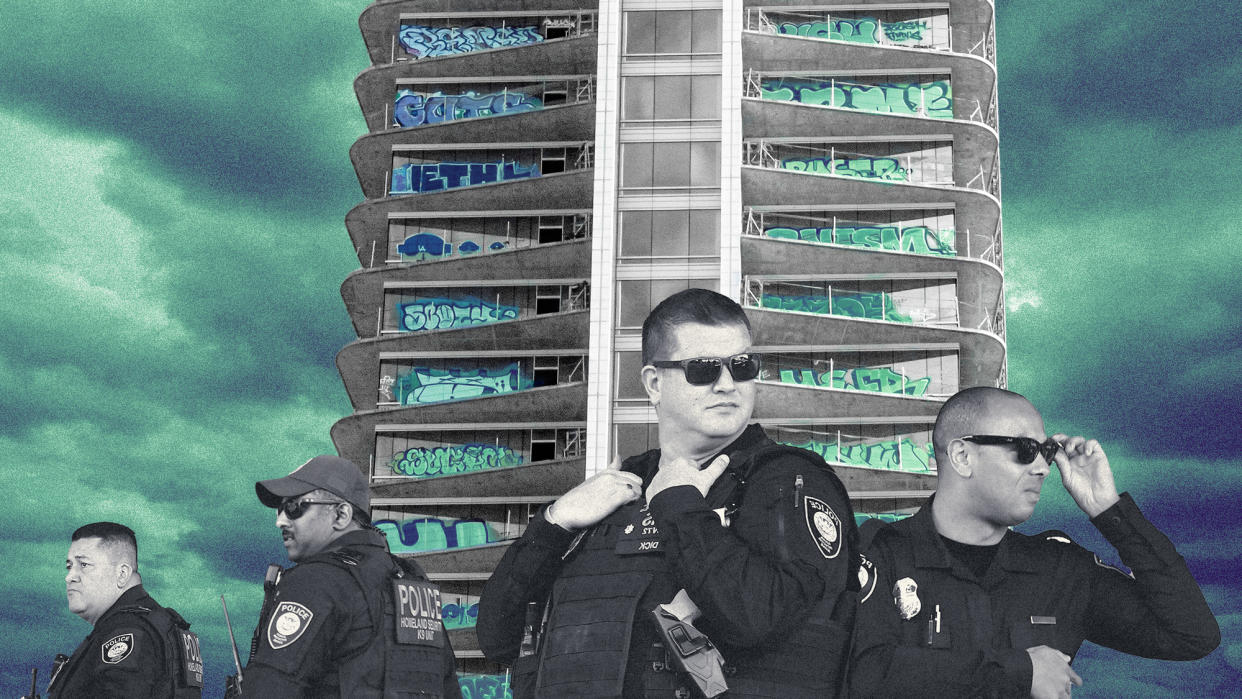How a graffiti-covered skyscraper became LA's newest landmark

An abandoned, graffiti-covered luxury complex in Los Angeles has become a site for social media stunts and triggered debate over the value of artistry versus vandalism. The complex, which is currently known as LA's graffiti tower, is quickly becoming a nuisance for the city.
The origins of 'LA’s newest landmark'
Before capturing the world's attention, Oceanwide Plaza languished in Los Angeles for years, abandoned by its original owners. The complex was supposed to house a hotel and luxury condominiums, and it was expected to cost China Oceanwide Holdings, the Hong Kong real estate developer behind the project, roughly $1 billion to finish, said Business Insider. However, the company paused the project in 2019 after running out of money, leaving the unfinished towers abandoned — until now. The buildings are close to the Crypto.com Arena, the home of the Los Angeles Lakers and the location of the 2024 Grammys.
Since the company deserted the project, the towers have attracted scores of graffiti artists who are tagging large portions of the 53-story buildings, as well as BASE jumpers who have filmed themselves parachuting off the complex. The spray-painted tags received global attention in January when the Grammy Awards were held across the street, encouraging even more taggers and thrill-seekers. "I guarantee you tragedy will take place there if that place is not boarded up quickly," LA Mayor Karen Bass told a local TV station, per the Financial Times. "The owner should reimburse the city for every dime."
Meanwhile, LA's graffiti community has been "ecstatic" over what they accomplished because the tower was "visible for miles in every direction," said The Hollywood Reporter. "We went in as Knights of Night — all dark-black clothing, heavy backpacks full of spray cans," Street Graff, a graffiti videographer who documented the operation, told Hollywood Reporter. The towers now stand as a "representation of our beautiful graff community." Whether locals liked it or not, "LA’s newest landmark was born," the outlet said. While some have praised the spontaneous art, others have denounced it as "vandalism" and "crime run amok," not to mention "a massive eyesore."
The response to LA's graffiti towers
Last week, LA's city council approved almost $4 million in city funds after the developers behind Oceanwide failed to meet a deadline. Councilman Kevin De León issued the motion, backed by the rest of the council, in which he called the Oceanwide Plaza a "black eye on an otherwise vibrant part" of downtown LA. He called for developers to fence off the property, hire better security, remove the graffiti and clear out public obstructions. Oceanwide was given until Feb. 17 to respond but did not, leading the city to approve the funds. The motion allocated $1.1 million of the funds to fence off the property and $2.7 million for security and graffiti removal on about 30 floors of the towers, said LAist. The city council also asked the city attorney to find a legal route to "recoup the money from Oceanwide."
In the meantime, the towers have become "fodder for conversations about urban blight and foreign investment," said The Washington Post. For the graffiti aficionados participating and watching, the "bombing," as it is known in the graffiti world, was "more than a stunt or a crime." In a society where visibility rules, the towers have become a landmark, "literally taking the art form to a higher level," the Post added. "For them, it’s a historic moment."
People are entitled to dislike graffiti, but they should "respect the effort to use the space that nobody else seems to be caring about right now,” Stefano Bloch, LA native, former graffiti artist and professor at the University of Arizona said to the Los Angeles Times. He pointed to the LA River and the Belmont Tunnel in Hollywood as examples of graffiti artists using abandoned spaces to make the city feel more "human" again. "This was a giant building that a community of people is finding use in," he said. "It’s people making use of the things that others neglect or leave behind."


